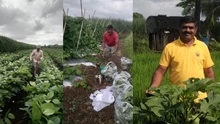
Dairy farming is the practice of keeping or rearing animals for the purpose of producing milk and dairy products. For profitable dairy farming, farmers must select popular cows, sheep, and goat breeds.
Smart Dairy Farming
Smart dairy farming is becoming more viable thanks to the Internet of Things (IoT) and data-driven strategies. Because of the world's growing population, milk consumption is steadily increasing. In developed countries, dairy products are consumed at a higher rate than in undeveloped countries. Better technical solutions for increasing milk output are necessary to fulfill this rising demand for milk products. The usage of IoT and various AI techniques is intended to aid a farmer in overcoming several traditional farming obstacles and increasing milk production.
Although many cattle can produce milk, but in this article, we will be focusing on dairy cows.
Modern Cow Dairy Farming
Dairy farming is primarily concerned with reproductive care and milking. Calves are carefully cared for. They've also been fed their mother's milk. A substantial amount of high-quality fodder is also provided. It is estimated that a herd of cows will eat about 900 tons of feed per year.
Milking process
The cows are taken to a special milking compartment where they are milked automatically while eating. With this automatic system of milking, hundreds of cows can be milked in a day. After taking the fixed amount of milk the automatic system containing a pipe through which the milk passes will disconnect itself. And the current batch of cows will be replaced with a new batch.
Robot Milking: Another modern system is Robot Milking. Robotic milking has acquired significant acceptance, notably in western Europe, as a method to minimize labor on dairy farms, enhance yield per cow, and improve the lifestyle of dairy farm families milking 40 to 250 cows
Cow stress is reduced since they may choose to be milked when they need and want it. There is no set plan for milking each cow at a specific time, resulting in lower stress and increased milk output.
The cows may walk up to a robotic milking machine anytime they wish to be milked. These machines may also feed or supplement the cows, as well as track body weight, milk yield, temperature, and other factors to aid in health and wellness tracking. Milking cups with sensors connect to the teats of the cow from underneath, following disinfection, to reduce mastitis. The robot then finishes milking the cow, detaches from the animal, and the cow is free to leave the machine.
How to Start Robot Milking
Starting with 50-60 cows per robot and dividing the group into two subgroups is advised when using robotic milking. The cows are enticed inside the robot three times a day for the first three days. To avoid the cows developing a negative association with the robot, this should be done in a calm and patient manner. After 75 percent of the cows will go to the robots on their own within these three days, the routing gates can be removed. Allow the cows to roam freely (free cow traffic) and gather the cows with a milking interval of more than 10 hours four times a day.
The number of cows fetched is gradually decreased to twice daily, with only the cows having a milking interval of more than 12 hours (or more than 10 kg (22 lbs) of milk being fetched.
Conclusion
This technology will play a significant part in the dairy industry's future. To date, only a small amount of study has revealed ways to boost robot efficiency by strategically managing stocking rates and milking permission, as well as selecting cows for milking speed and teat positioning. More study in these areas, as well as the ability to vary milking frequency, will surely lead to new ways to enhance robotic milking outcomes in terms of labour savings and milk output per milking stall and per cow.












